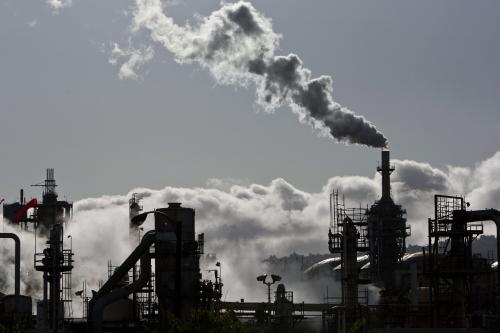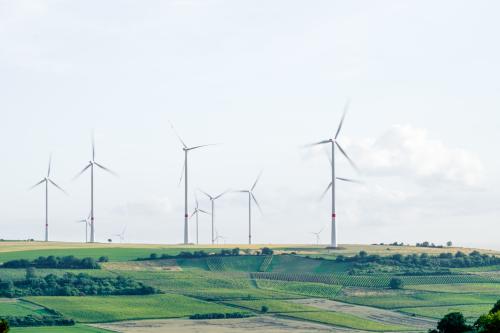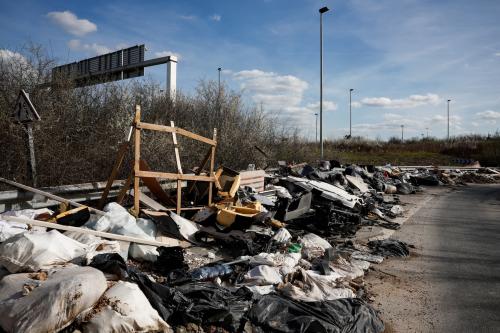U.S. infrastructure has emerged as an area of both critical national need and significant bipartisan support. Some of the needed infrastructure is energy-related, such as transmission lines, electricity storage, power and industrial carbon capture systems, nuclear facilities, fuel-efficient vehicle manufacturing and electric car charging stations. So, why not start there?
The good news is that there is significant federal funding, already authorized and appropriated, that can be used to get energy infrastructure investment moving immediately. Right now, the Department of Energy (DOE) loan guarantee program, signed into law by President George W. Bush, has $41 billion in existing spending authority across this broad range of technologies and beyond.
This is not chump change and would be a significant down payment on the trillion-dollar infrastructure program that President Trump highlighted in his recent speech to Congress where he also emphasized the need for both “public and private capital.” But there are two catches.
First, the loan guarantee funds must be spent on innovative energy and transportation projects. But that is a good problem. To date, the DOE program has backed a variety of innovative infrastructure: a new high voltage transmission line in Nevada with more cost-effective construction and a reduced environmental footprint; an electricity storage project in New York to address voltage fluctuations in the grid; advanced nuclear reactors in Georgia with innovative safety systems; and fuel-efficient engine manufacturing in Michigan that has improved, among other things, the fuel economy of the popular Ford F-150 truck.
The other catch is that the loan guarantee program is a favorite punching bag of some House Republicans. In numerous hearings over the past several years, Republicans on the House Science Committee have assailed the program because of a few high-profile loan defaults, most notably one associated with the overhyped failure of the California solar panel manufacturer Solyndra, and called for an end to DOE’s investments. In keeping with that, groups like the Heritage Foundation are now pushing to shut down the loan guarantee program and “revoke any existing ability to administer government-backed loan or loan guarantees.”
But there is also good news on this front. In a recent House Science Committee hearing, I highlighted the impressive financial performance of the more than 30 loans and loan guarantees in the DOE portfolio. Altogether, there have been $36 billion in loans, loan guarantees, and commitments to date in the program, with $6.65 billion in loan principal and $1.79 billion in interest already repaid to the U.S. Treasury – aka U.S. taxpayers. It is important to emphasize that these are loans, not grants, and the government gets paid back – with interest.
But what about losses? There is good news here as well. Losses in the portfolio, as of December 2016, are barely half of the interest paid so far, or just over 2 percent of the program’s commitments to date, and a tiny fraction of the $10 billion set aside by Congress to cover failed loans. The loan program’s approximately 2 percent loan loss ratio is less than the loss ratio in the loan portfolios of virtually every U.S. money center bank. And these banks are generally not making loans for energy and transportation projects deploying advanced technologies.
Adding to the opportunity, there is a compelling new example of the program’s progress. In December, then-DOE Secretary Moniz announced a $2 billion conditional loan commitment for a Louisiana project that will convert oil-refining waste into high-value methanol, a key industrial chemical. The carbon dioxide captured in the process will be injected into Texas oil fields to enhance their production, with the CO2 permanently sequestered underground. Beyond that, the DOE’s experienced staff of investment professionals is reviewing more than $50 billion worth of proposed new investments across 70 different energy-related projects for approval by DOE Secretary Perry.
As to the bigger picture, the International Energy Agency projects that the world will spend roughly $48 trillion on energy infrastructure in the next 20 years – one of the biggest economic opportunities of the 21st century. China, however, is organizing to take the biggest piece of this economic pie. It has no reluctance helping energy project developers raise capital to commercialize technologies and sell them to the world. We ignore China’s resolve—and impressive success to date—at our peril. Such resolve and success only underscores that the attacks on the DOE loan program are misguided.
In summary, the new administration and Congress should build on the loan guarantee program’s success—and substantial remaining loan authority—to jumpstart U.S. investment in energy infrastructure and advance our nation’s economy, environment, and security in the process.







Commentary
$41 billion in guaranteed infrastructure? DOE’s loan guarantee program is ready
3/2/17